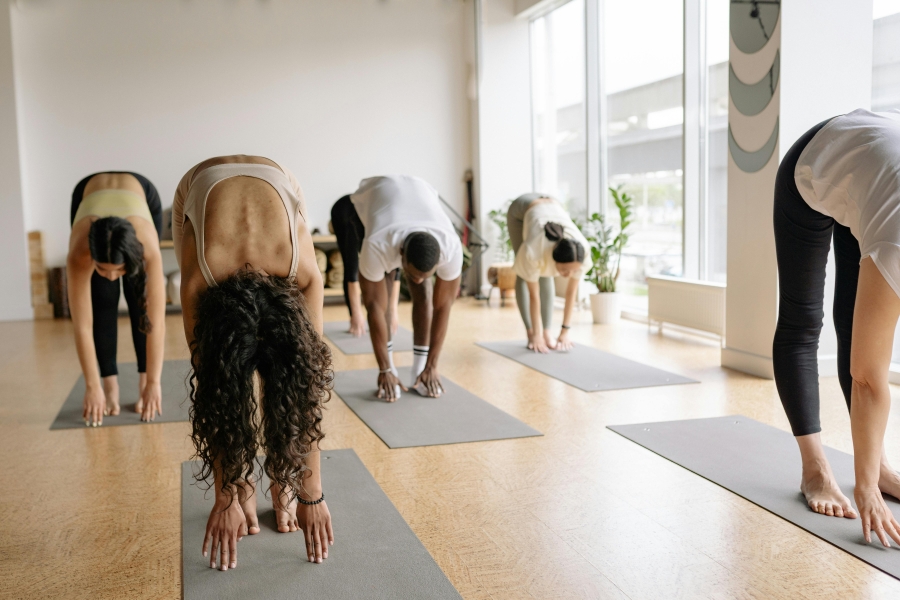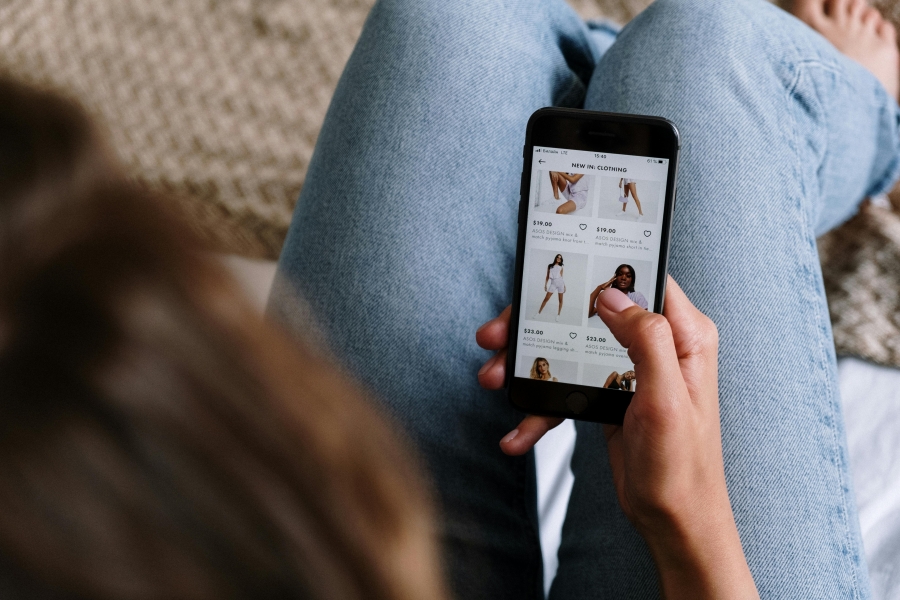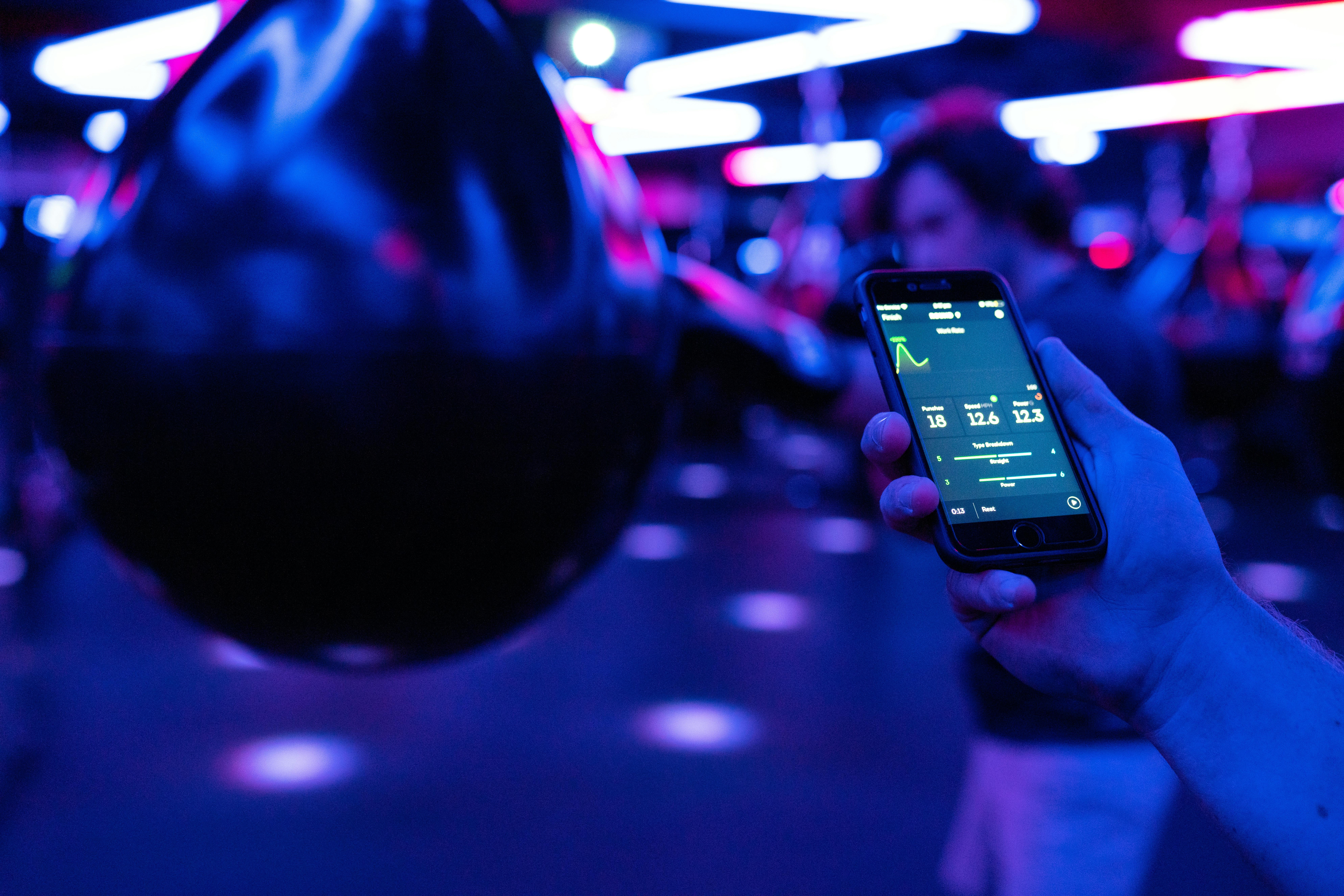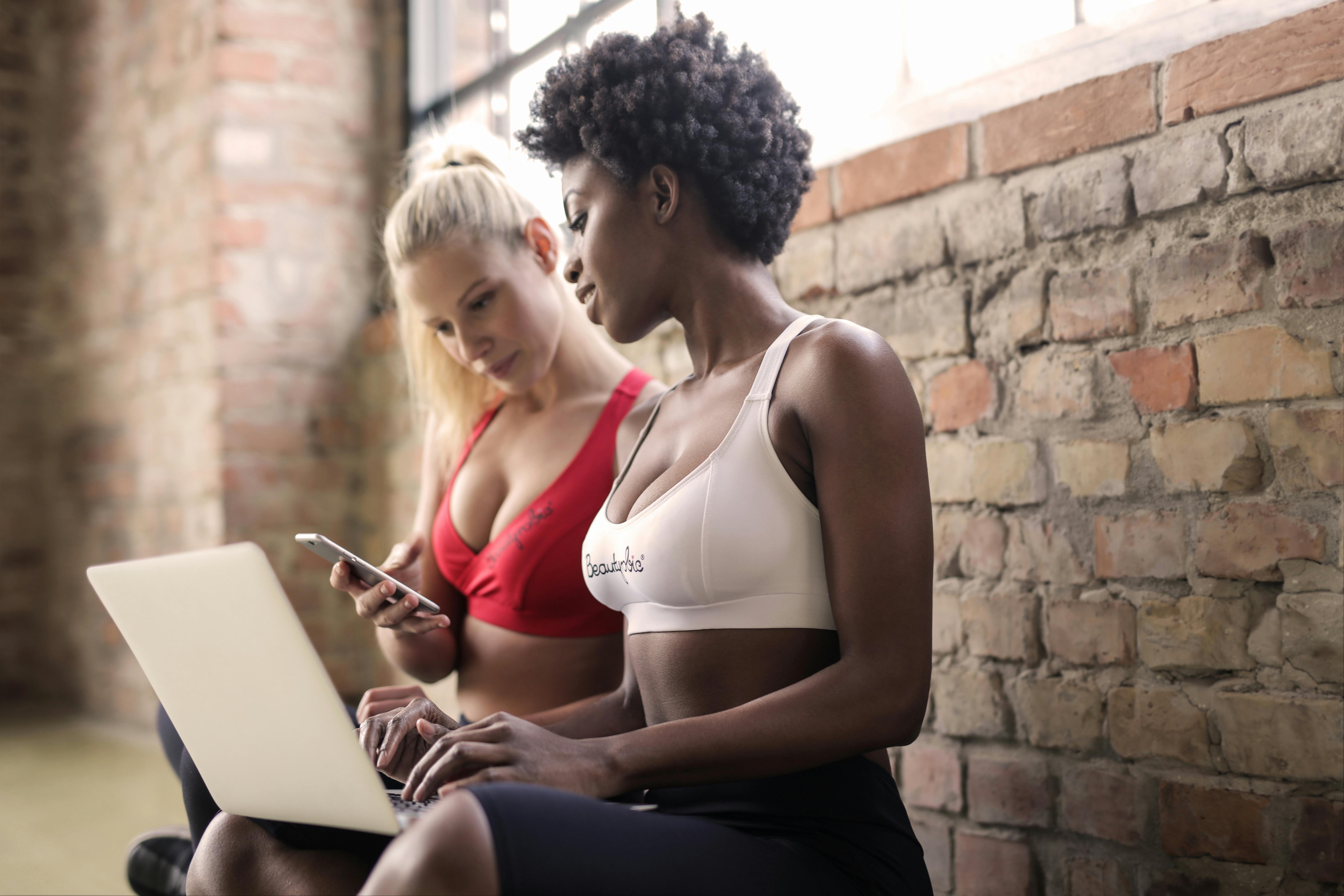Living a healthy lifestyle and nurturing our bodies and minds through regular exercise are essential components of success. Being part of a gym and embracing this lifestyle is an achievement many members take pride in showcasing.
Branded gym merchandise not only enables your members to display their success and dedication to self-improvement but also fosters a sense of community within your facility. Selling branded swag bolsters brand loyalty and serves as a platform to promote your gym's identity and values.
What's not to like?
In 2019, Americans spent an average of $270 per month on health and fitness. Across the pond in Europe, the industry generated €28 billion with 63.1 million members attending over 63,830 fitness clubs.
What’s more, Europe’s enthusiasm for sports also translated into a significant increase in consumer spending across the sector. Analysis by the Mastercard Economics Institute shows that consumer card spending on sporting goods, services and experiences was up 37% in 2022 compared to 2021.
And, for the same reason that we buy popcorn at the cinema, offering branded clothing or supplements is a great way to tap into that secondary spend.
This comprehensive guide will explore the strategies and steps to successfully sell branded goods at your facility to strengthen your brand and generate more income.
7 Reasons to Sell Gym Merchandise In Your Fitness Club
Selling branded merchandise provides gyms and fitness centres with numerous advantages. Here are just a couple of them:
- Brand promotion and recognition: Selling company merch allows leisure and fitness centres to promote their brand and increase their presence. When customers wear or use branded merchandise, they become walking advertisements, spreading awareness of the gym to a wider audience.
- Additional revenue stream: Selling merch creates an additional source of revenue for gyms. It diversifies their income streams and contributes to financial stability and growth, adding another element to the business.
- Fostering a sense of community: Branded products create a sense of community among gym members. When newcomers are part of a class where members wear branded merch, it fosters a feeling of belonging and camaraderie. See how the boutique gym Harder increased class sizes by 14% using this concept.
- Enhancing brand loyalty: Branded merchandise cultivates brand loyalty among gym members. By offering products that align with the gym's identity and values, members feel a deeper connection to the brand and are likelier to remain loyal and engaged.
- Effective marketing tool: Branded merchandise serves as a powerful marketing tool. It increases brand visibility, especially when worn outside the gym premises. It also sparks conversations and word-of-mouth recommendations, attracting new customers to the club.
- Supporting member engagement: Selling branded merchandise encourages member engagement. Your clients can showcase their affiliation with your business and express their fitness journey which in turn helps build a strong sense of belonging and encourages active participation within the gym community.
- Cross-promotion and partnerships: Gymshark and the dating app Bumble are an unlikely duo, but they work. Branded merchandise opens doors for cross-promotion and partnerships in a similar way. Businesses can collaborate with local manufacturers and home-grown clothing brands to create co-branded products. This expands the gym's reach, taps into new customer segments, and strengthens its position in the fitness industry.
Last but not least is social status and keeping up with certain fashions and trends in the fitness sphere.
These trends have emerged due to the increasing focus on fitness and wellness, the desire for self-expression, and the influence of social media. Gym-goers seek to identify with a fitness community and share their dedication to a healthy lifestyle. By offering branded merchandise that aligns with these trends, gyms can tap into the market's demands, strengthen their brand presence, and create additional revenue streams.
How to Start Selling Gym Merchandise
Now that we understand the importance, let's dive into the practical steps to start selling branded merchandise at your gym.
Select the Right Merchandise
To offer appealing products that resonate with your members, consider the following products:
Branded T-Shirts and Hoodies
Branded t-shirts and hoodies are among gyms' most common merchandise items. They provide a practical and comfortable way for your clients to showcase their affiliation with the gym while working out or in their daily lives. These items often feature the brand logo, tagline, or motivational slogans, creating a strong sense of identity and belonging among members.
Activewear
The fitness industry has witnessed a surge in demand for activewear and is expected to grow at 5.8% until 2028. Defined as leggings, shorts, tank tops, and sports bras, gyms selling branded activewear capitalise on this trend by offering stylish and functional workout attire that represents their brand.
Branded activewear helps members feel confident, motivated, and look good!
Water Bottles
Water bottles have become a staple accessory for fitness enthusiasts, emphasising the importance of hydration during workouts. These bottles often feature durable materials, ergonomic designs, and the gym's logo, making them practical and visually appealing for members to use during workouts.
Gym Bags
Gym bags are essential for carrying workout gear, towels, and personal belongings back and forth. Branded bags serve a practical purpose and act as a walking advertisement for the business. They offer ample space, compartments, and comfortable straps while displaying the logo and branding elements, promoting the facility wherever members go. Plus, members can use them for other sports.
Wristbands
Wristbands have become a popular accessory among fitness enthusiasts. They serve various purposes, from absorbing sweat to adding a stylish touch to workout outfits. Branded wristbands can feature motivational quotes, the gym's logo, or empowering messages, further reinforcing the business identity and values.
Food & Supplements
Food and nutrition are important for everyone entering your facility, regardless of fitness, age, or strength. Consider selling branded supplements to improve your image as a trusted source of fitness and wellness products.
Your point of sale improves customer convenience by offering a one-stop-shop for fitness needs before, during or after a workout.
A note on quality: Your leisure or fitness club needs to pay attention to quality, comfort, and style when selecting, designing and selling branded merchandise. By keeping up with the latest trends and understanding their target audience's preferences, gyms can offer goods that resonate with their members, enhance their experience, and foster a strong connection to the brand.
Design and Branding
The importance of design cannot be overstated. Designing products that resonate with the gym's brand identity and ensuring their desirability is crucial to making your merchandise attractive to customers.
Here's what to take into consideration when designing your goods:
Reflect Brand Identity and Values
Designing merchandise that aligns with the gym's identity and values helps establish a cohesive and authentic brand image. The design elements should evoke the essence and aesthetics of the gym, its mission, and its experience.
Whether it's a sleek and minimalist design or a bold and vibrant aesthetic, the merchandise should visually represent what the gym stands for.
Incorporating Logo, Colors, and Tagline
Incorporating the gym's logo, colours, and tagline into the merchandise design reinforces brand recognition and consistency. The symbol communicates the gym's identity, instantly associating the merchandise with the business. Colours are crucial in evoking emotions and creating a cohesive visual experience. The tagline can further communicate the gym's values, aspirations, or motivational messages, enhancing the overall appeal of the products.
Standing Out Among Competitors
The fitness industry is growing at a rate of 33% per year, and the demand for fitness retail items is growing with it. In such a competitive market, creative and eye-catching designs and slogans are essential to differentiate your gym apparel from competitors.
Unique and innovative designs capture attention, spark interest, and make your gear memorable.
Building a Sense of Exclusivity
Well-designed branded merch can create a sense of exclusivity and desirability among members. When the products reflect the gym's identity and values, customers feel a deeper connection and pride in owning and wearing them. Limited-edition or special collaboration merchandise can further enhance the exclusivity factor.
Pricing and Profitability
To ensure profitability while maintaining customer affordability, it is crucial to implement effective pricing strategies. Here are some key considerations to keep in mind when setting prices for your gym merchandise:
- Consider production costs: Begin by calculating the costs associated with your merchandise. Consider the expenses for materials, printing, labour, and any additional costs involved in creating the products. This analysis will give you a clear understanding of the minimum price required to cover your expenses.
- Market analysis: Research competitor pricing to gain insights into the market and determine a competitive yet profitable price range. While it's important to be mindful of your competitors, ensure that your merchandise costs reflect its unique value. Try not to compete on price but rather add value.
- Perceived value: Evaluate your product's perceived value from your customer's perspective. Consider factors such as the quality of materials, the design's uniqueness, and the items' exclusivity. Customers may be willing to pay a premium price if your merchandise boasts exceptional quality or features a high-end unboxing experience. On the other hand, if your target audience values affordability, focus on offering competitive prices while still maintaining a reasonable profit margin.
- Bundle deals and discounts: Encourage customers to make larger purchases by offering bundle deals or discounts. Bundling related items together creates a sense of value and can motivate customers to buy more than one item at a time. For example, you can offer a package deal that includes a branded t-shirt, water bottle, and gym bag at a discounted price. This increases the average transaction value and promotes a cohesive brand experience by showcasing multiple merchandise items together. Additionally, periodic discounts or limited-time offers can create a sense of urgency, prompting customers to make a purchase sooner.
Creating an Appealing Display
Designing an enticing merchandise display draws your customer's attention as they pass by. Store fit-outs are an entire industry in themselves, but here are several things to consider:
Visual appeal
Use visually appealing shelving, signage, and lighting to create an attractive and well-organized display area within your gym.
Strategic placement
Position merchandise displays in high-traffic areas near the entrance, reception, or workout zones to maximise visibility and customer engagement.
Upgrade your Point of Sale
Having a modern Point of Sale software that integrates various payment options makes the buying experience hassle-free for members and gives you actionable insights on merchandise sales. PerfectGym's POS streamlines retail transactions and provides reports allowing you to make strategic decisions to boost revenue.
Selling Branded Gym Merchandise Online and Offline
Once your facility is established selling branded merchandise within its physical premises, expanding into online sales can bring a host of additional benefits.
- Expanded customer reach: Selling branded apparel online helps your business reach a much broader customer base beyond their local area. With an online store, you can tap into a global market and attract interest from various geographical locations. This opens up new opportunities for growth and revenue generation.
- Upselling and cross-selling opportunities: Online sales platforms offer gyms the ability to showcase related products and offer upselling and cross-selling opportunities. Fitness facilities can increase the average order value and maximise sales potential by suggesting complementary items or displaying items frequently purchased together. Your gym's mobile app can be used to send push notifications to clients about sales, deals or other exclusive discounts on your fitness clothing.
- Convenience for customers: Online sales improve convenience by eliminating the need to visit the gym in person to purchase merchandise. With just a few clicks, customers can browse, select, and buy items from the comfort of their homes or on the go. This flexibility enhances the overall client experience and encourages repeat purchases.
- 24/7 sales availability: Unlike physical retail spaces with limited operating hours, an online store allows gyms to have a continuous sales presence. Customers can make purchases at any time, day or night, expanding the potential for sales and revenue. This round-the-clock availability caters to customers' diverse schedules and preferences.
- Enhanced product visibility: Online platforms allow gyms to showcase branded merchandise to a wider audience. Your business can increase product visibility and attract new customers through digital marketing strategies, such as search engine optimisation (SEO), social media advertising, and email campaigns.
- Seamless order fulfillment: Online sales enable gyms to streamline the order fulfilment process. PerfectGym Manager can handle both ‘click and brick’ and also help automate processing, inventory management, and shipping logistics. This results in faster fulfilment, reducing the time and effort required to handle customer orders manually.
- Data-driven insights: Online sales platforms provide valuable data and insights about your business and sales that can inform broader strategic decisions. Gyms can gather information on customer preferences, purchase patterns, and demographic data. This data can be utilised to refine marketing strategies, improve product offerings, and enhance the overall client experience.
The referenced media source is missing and needs to be re-embedded.
Conclusion
You can successfully sell branded merchandise at your gym by implementing the strategies outlined in this guide.
Remember, it's not just about generating revenue but also strengthening your brand, fostering a sense of community, and promoting your gym's identity and values.
With carefully selected gear, thoughtful design, effective pricing, and strategic promotion, your branded merch can become a powerful asset in elevating your gym's success and creating a loyal customer base.
Start by seeing how PerfectGym can handle all the heavy lifting behind the scenes, and schedule a demo presentation.














